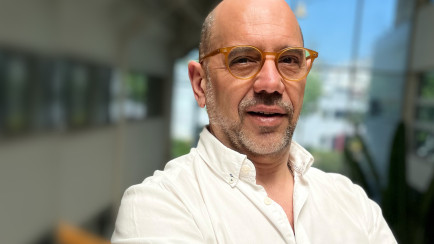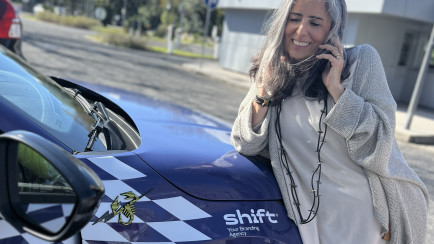By Francisca Lousada, Project Manager at Shift Your Branding Agency
At a time when the judicial decision regarding the lawsuit filed last December by the New York Times Company against Microsoft Corporation and Open AI is awaited, I decided to reflect on the matter. The New York Times alleges copyright infringement and argues that this type of Artificial Intelligence (AI) models threatens journalism and, consequently, democratic regimes. Much has been debated on these matters – whether in the context of this lawsuit or outside it –, but today the democracy I speak of is that of creativity.
Like many others, the creative industry has felt the consequences (be they positive or negative) of the new models and AI tools. The central question is whether these new models and tools will be able to democratize creativity and create in a way equivalent to that of a human being. Artificial Intelligence is not a recent development. In fact, the modern concept of AI began to take shape in the 20th century by the hand of Alan Turing, and since then, the technology has been refined. Advancing a few decades, we see that virtual assistants like Siri or Alexa – which use AI – were launched in the 2000s. Our favorite streaming platforms (whether Netflix, Spotify, or others) make use of the same models – either for their recommendation systems or to optimize content –, and the GPS we so heavily rely on, too. AI did not emerge now; what changed was the easy access to tools that help us create and compete (even if our level of expertise in that task is low or nonexistent). The use of this verb was intentional because it seems pertinent to divide the central question into two: to understand if AI can create in a way equivalent to that of a human being and, in the same way, to understand how competitors – who have access to the same tools and opportunities – can distinguish themselves?
Positioning Artificial Intelligence as an opportunity or threat to creatives is controversial. On one hand, it can be a catalyst, but on the other, it puts everyone's skills to the test.
It is relatively consensual that Artificial Intelligence allows for improved efficiency and brings opportunities for experimentation. In a context where time always seems scarce, tools like Adobe Firefly (which includes Photoshop Generative Fill, Illustrator Recolor, among others), Midjourney, Microsoft Bing AI, GigaPixel, DALLE-E, or the acclaimed Chat GPT, are a positive contribution to the agility and productivity of teams. Our experience at Shift is that these tools free us from more operational tasks that previously took a lot of time, which potentially allows us to adjust our value proposition. However, productivity is only positive when accompanied by effectiveness, which is why the use of AI should always be subject to the greatest exercise of critical thinking. Even when it helps us create, it demands twice the scrutiny from us. It also requires a refined and demanding creative (or strategic) direction, upon which the quality of the achieved results will depend.
I remember growing up hearing that "freedom comes with responsibility." In my view, we can apply the same rationale here. Well, the challenge is to channel the time we gain on the more operational and repetitive part of the process into the strategic and creative dimension. The secret is to remember that, in this democratic regime, when we go to vote, originality wins, not speed.
This article was published in Executive Digest.

In the latest edition of Meios & Publicidade, Ricardo Pinto Correia, Head Designer at Shift, shares an article that challenges the way we think about branding in...

Dubai Chocolate, the global phenomenon of the moment, quickly conquered the world and all it took was a post on TikTok showing an influencer's experience with the produc...

Shift is the branding agency that doesn’t leave your brand in someone else’s hands. Now that a new edition of the Eco Rally is kicking off, its partnership with World Shopper...
